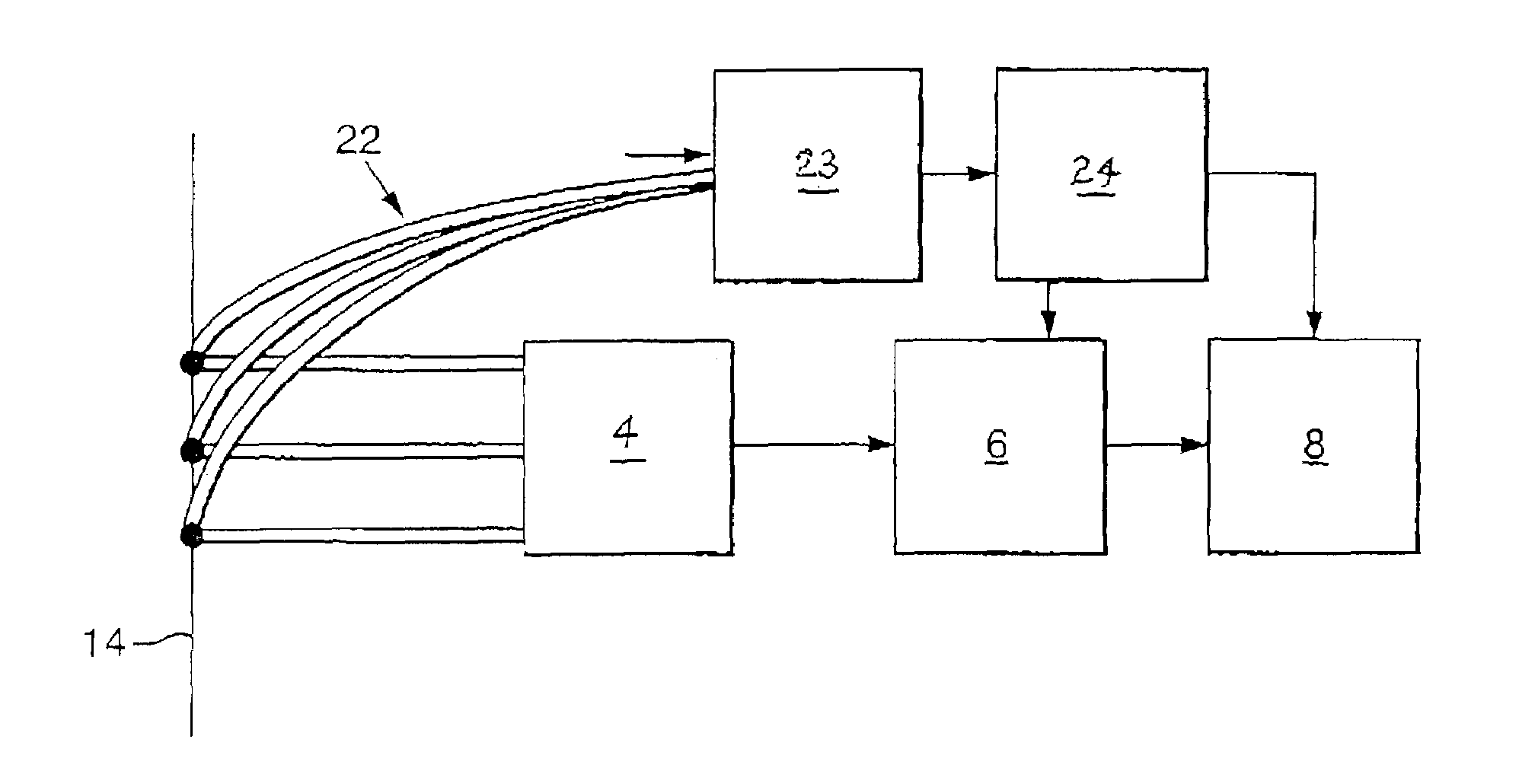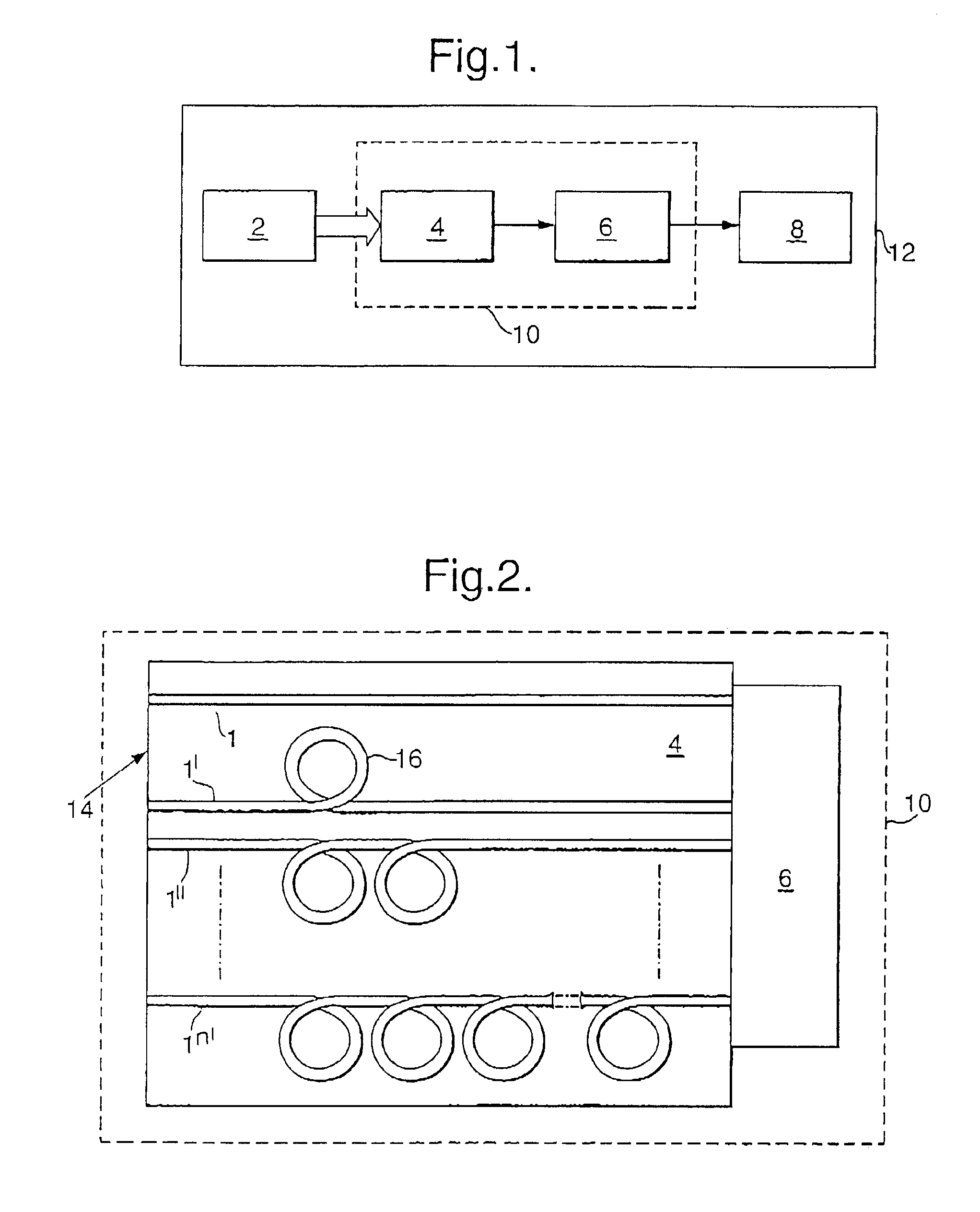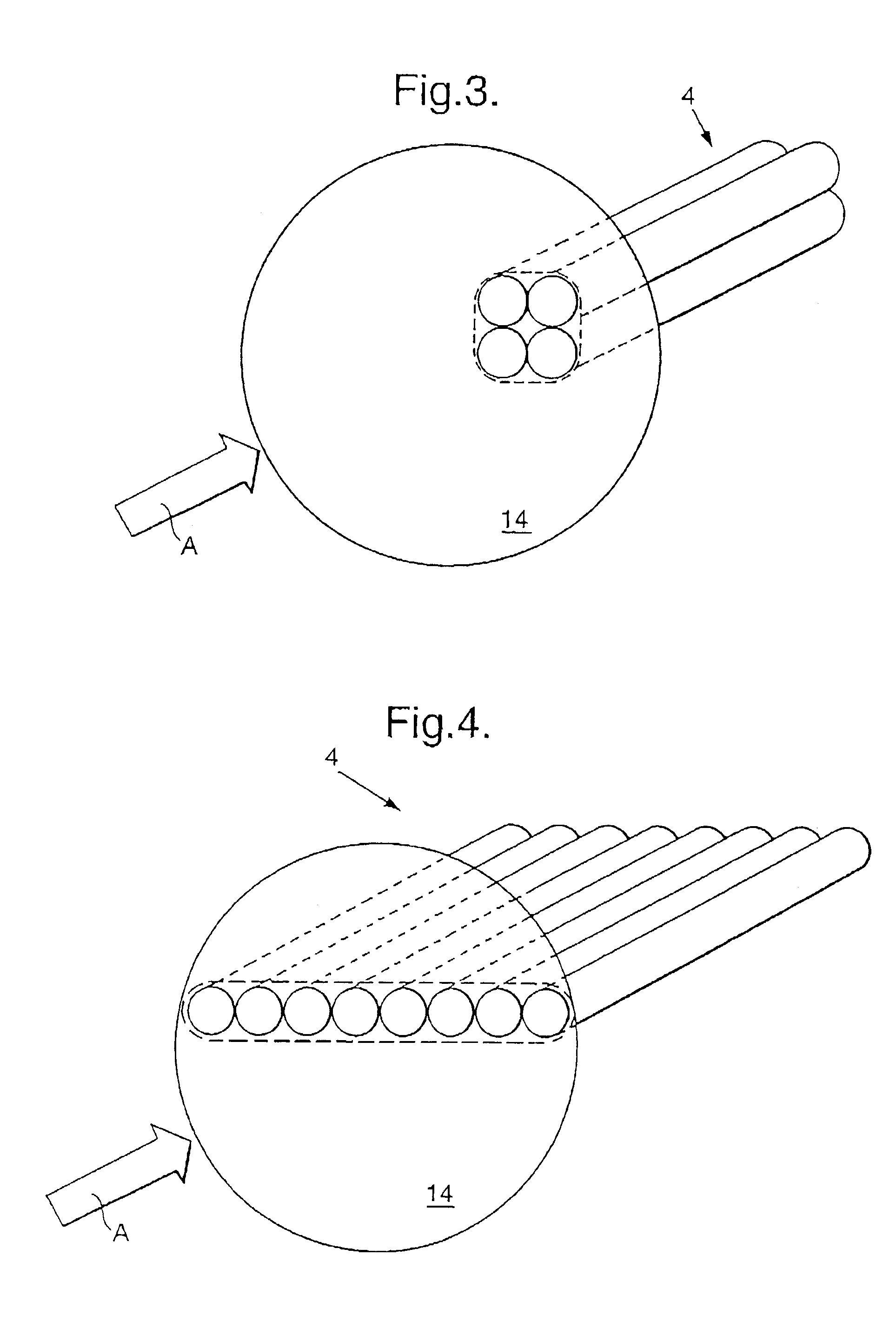Method and a system for multi-pixel ranging of a scene
a multi-pixel ranging and scene technology, applied in the field of methods and systems for multi-pixel ranging of scenes, can solve the problems of plurality of targets, difficulty in achieving the effect of reducing and rendering such a system impractical, so as to avoid the drastic attenuation of the signal, shorten the length of the fibers, and reduce the weight, cost and volume of the system
- Summary
- Abstract
- Description
- Claims
- Application Information
AI Technical Summary
Benefits of technology
Problems solved by technology
Method used
Image
Examples
Embodiment Construction
[0036]Referring now to the drawings, there is seen in FIGS. 1 and 2 a block diagram of the system of the present invention, comprising imaging means 2 such as, e.g., a lens, a bundle 4 of optical fibers 1 to 1n′, a single detector / receiver 6 and signal addressing logic 8. The fiber-detector sub-unit is denoted by numeral 10, and the entire system by numeral 12. In FIG. 2 there are seen details of the sub-unit 10 of FIG. 1 also illustrating the working principle of the invention, according to which the whole array of detectors required by conventional range imagers is replaced by a single detector / receiver 6.
[0037]It is assumed that an illuminator (not shown) illuminates the scene by appropriate pulses of light and that a multi-pixel optical image of the scene is produced by imaging means in the ranging plane 14 in which the front end of the fiber bundle 4 is located. The plane 14 collects the echoes of the illuminator light from the various parts of the scene, each having its own ra...
PUM
 Login to View More
Login to View More Abstract
Description
Claims
Application Information
 Login to View More
Login to View More - R&D
- Intellectual Property
- Life Sciences
- Materials
- Tech Scout
- Unparalleled Data Quality
- Higher Quality Content
- 60% Fewer Hallucinations
Browse by: Latest US Patents, China's latest patents, Technical Efficacy Thesaurus, Application Domain, Technology Topic, Popular Technical Reports.
© 2025 PatSnap. All rights reserved.Legal|Privacy policy|Modern Slavery Act Transparency Statement|Sitemap|About US| Contact US: help@patsnap.com



